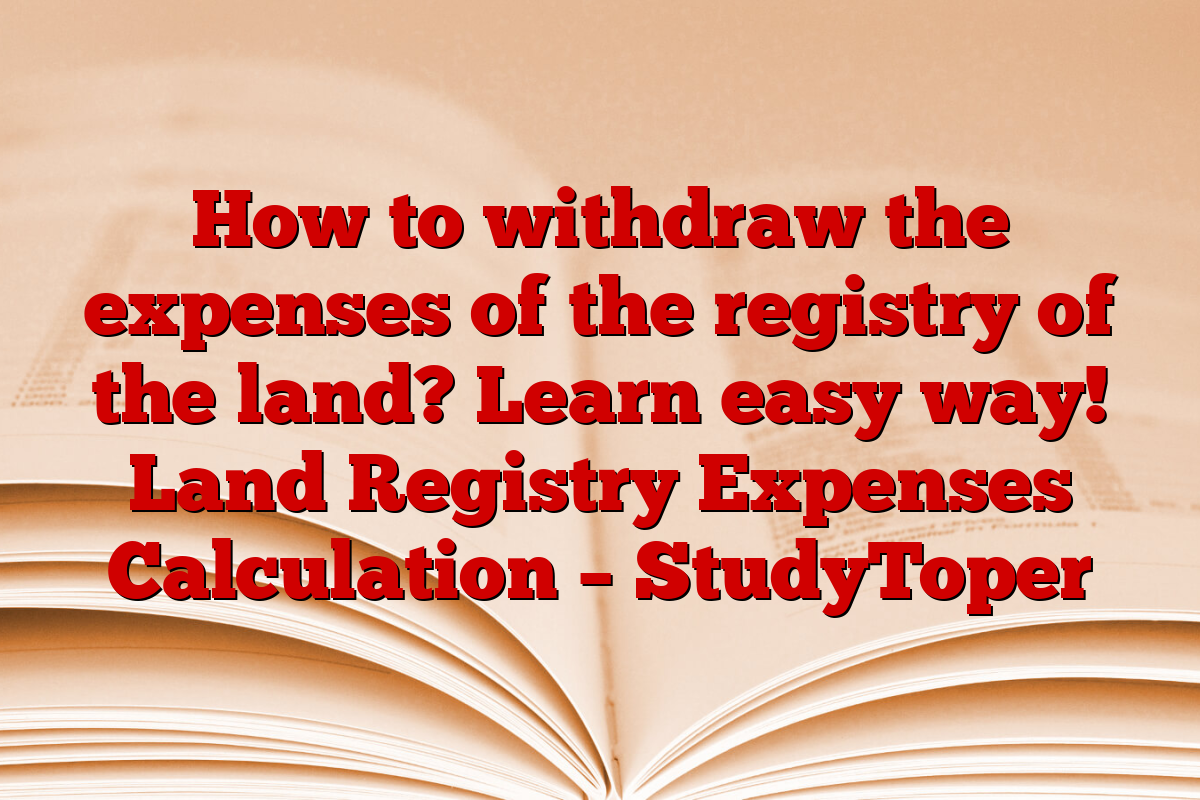Buying and registration of land is an important process. This not only gives legal recognition to your property, but also helps to avoid any dispute in the future. However, registration of land involves several expenses, such as stamp duty, registration fees, and other fees. It is very important to have correct information about these expenses so that you can plan your shopping correctly.
In this article, we will tell you the full way of extracting the expenses of the registry of the land. Also, you will explain all the aspects related to it in detail so that you can complete this process without any hassle.
What is the registry of land? (What is land registry?)
The registry of the land is the process in which the property purchased is legally recorded in the name of the buyer. This process comes under the revenue department of the state government and includes many types of fees.
Below is a table that summons the main points related to the registry of the land:
| Parameter | Description |
| Stamp Duty | A certain percentage of land price |
| Registration fee | 1% of stamp duty or fixed fee |
| Processing fees | Small administrative fee |
| Advocate fees | Fee charged by lawyer |
| Type of property | Residential, commercial or agricultural land |
| Location | Urban |
| Another fee | Survey and document preparation fee |
Key Expenses in Land Registry
1. Stamp Duty
Stamp duty is the biggest expense that is spent in the registry of land. It is decided by the state government and varying in different states. Usually it can range from 5% to 10% of the land market price.
- Example: If the price of your land is ₹ 10 lakh and stamp duty is 7%, then you have to pay ₹ 70,000.
2. Registration fees
Registration fees are 1% or a fixed amount of stamp duty. This is also decided by the state government.
- Example: If your stamp duty is ₹ 70,000, then the registration fee will be ₹ 700.
3. Advocate and documentation fees
During the registry process, lawyers and professionals preparing documents also have to be paid. This fee can usually range from ₹ 5,000 to ₹ 20,000.
4. Other administrative fees
These include survey fee, map making expenses, and other small administrative fees. This amount can range from ₹ 2,000 to ₹ 10,000.
How to withdraw the expenses of the registry of the land? (How to Calculate Land Registry Expenses?)
By following the steps below, you can easily assess your registry expenses:
- Learn the market price of property: First of all find out the current market price of your property.
- Check the stamp duty rate: Know the stamp duty rate applicable in your state.
- Add registration fees: Add registration fees based on stamp duty.
- Add other expenses: Include a lawyer and document -preparing fees.
- Remove the total expenses: Withdraw the total amount by adding all the above expenses.
Stamp duty rates in different states in various states
Below is the details of the stamp duty rates applicable in some major states:
| State | Stamp duty rate (%) |
| Uttar Pradesh | 7% |
| Maharashtra | 5% |
| Rajasthan | 6% |
| Tamil Nadu | 7% |
| Delhi | 4% – Special discounts for women |
Tips to save money on land registry
- Exemption for women buyers: In many states, women get exemption on stamp duty.
- Choose the right lawyer: Choose experienced but affordable lawyer.
- Shop in small towns: Stamp duty in rural areas is less than urban areas.
- Pay online: In many states, online payment is exempted.
What documents are required? (Documents required for land registry)
- Sale Deed
- Aadhaar Card/PAN Card
- Property map
- Previous owner’s document
- Address certificate
Conclusion
Registry of land is an important legal process that needs to be completed properly. For this, it is mandatory to assess all expenses correctly and keep the necessary documents ready.
Disclaimer:
This article is written only for the purpose of providing information. Please seek expert advice according to your status and state rules. It is necessary to understand all aspects related to land shopping and registry carefully so that any problem can be avoided in future.
